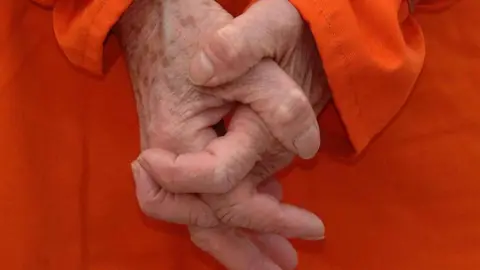More images of hands needed to help identify child sex offenders
 PA Media
PA MediaScientists building a database of images of hands as a way to identify child sex abusers are appealing for 500 more volunteers to come forward to help complete their research.
Researchers led by Lancaster University wanted 5,000 "citizen scientists" to help create a database of images to train machines to identify child abusers by analysing videos of their hands.
They would analyse unique features such as vein patterns, scars and freckles.
This will allow algorithms to be designed that will help police to link suspects to crimes as often the backs of hands are the only visible features of abusers in footage and images shared online.
The six-year H-Unique project builds on research techniques by Professor Lady Sue Black whose techniques have been used successfully in criminal prosecutions.
The forensic anthropologist said child abuse suspects had already been identified in court cases by matching features on the back of their hands with those in images of abuse.
But the process is very slow, requiring close study of shocking images by scientists and police officers.
Prof Black said designing computer algorithms would speed up the process and save officers and scientists from being exposed to the images for long periods of time.
Dr Bryan Williams, from Lancaster University, said public support for the project had been "fantastic" and the team were "thrilled with the technology that we have developed" but said they needed 500 more anonymous volunteers.
“Our citizen scientists are making a really important contribution towards helping provide a new tool for courts dealing with these very serious cases and helping to ensure that justice is served for some of the most vulnerable people in society,” he said.
Volunteers can submit images of their hands using an app at h-unique.lancaster.ac.uk.
Listen to the best of BBC Radio Lancashire on Sounds and follow BBC Lancashire on Facebook, X and Instagram. You can also send story ideas to [email protected]
